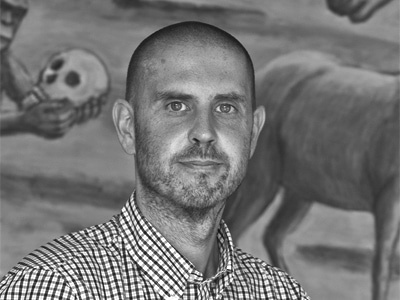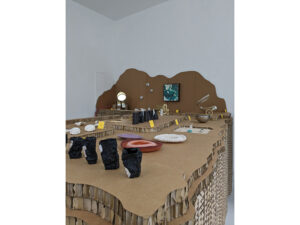The 2013 conference of the Society of North American Goldsmiths (SNAG) was held in Toronto, Canada, in May and was organized by Paul McClure of George Brown College and Melanie Egan of the Harbourfront Centre. The conference was a gathering of mainly North American professional jewelers, academics, and students. The activities included lectures, short PechaKucha-like presentations, interviews, exhibitions, a trunk show, educational dialogue, portfolio reviews, demonstrations, a vendor room, and finally a party. It was a packed agenda, trying to serve a variety of different ages, styles, and kinds of jewelers. Each year, the conference is organized in a different city and by a different set of organizers. How effective is this model? Should jewelers or academics without prior experience in conference organization be expected come up with the necessary knowledge to plan one?
The overriding concept behind the conference program went unexplained until Damian Skinner gave an overview of it in his introduction. He suggested that the title “Meta-Mosaic” was an appropriate choice given the location and the topic of the conference. Canada, he explained, refers to itself as a mosaic of diversity (rather than a melting pot), and the program was meant to address the very real diversity in the field of jewelry. This ambitious goal and the noble attempt to give all jewelers their due raises interesting questions about the meeting itself. Whom is SNAG serving with this conference? Why do the participants come? What are they expecting?
In this two-part series, AJF will hear the impressions of two different writers. Damian Skinner, former AJF editor and one of the speakers at the SNAG conference opens the series with a blow-by-blow overview of the talks. Then, Melissa Cameron, an Australian jeweler and first time contributor, takes on the very haunting question of skill, ever present during SNAG conferences. She interviews a number of makers to understand how they articulate their relationship to skill and how this conference program preempted some of their answers.
The theme for the 2013 Society of North American Goldsmiths’ (SNAG) conference was “Meta-Mosaic,” a phrase that draws on the important role that “mosaic” has played in Canadian articulations of national identity. The idea of a mosaic stands in contrast to the melting pot, which is favored across the border in the United States, as mosaic represents the notion of different elements linked into a whole while maintaining their distinct character. As Paul McClure and Melanie Egan suggest in the conference brochure and in their opening address, this is the character of Toronto, a city transformed by immigration in which more than half of the population was born outside Canada, and it inspired the conference theme, which was intended to explore the diversity and shared histories of metalsmithing and jewelry in the twenty-first century.
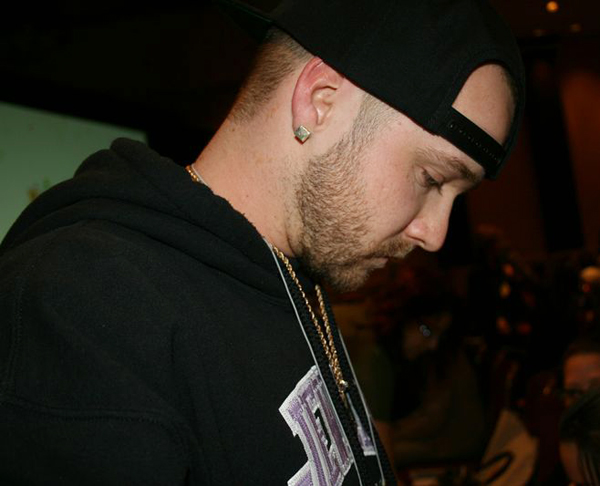
I found both of these sessions really suggestive, not so much because of the work itself, but because of the different ways these individuals framed what they do—the terms they used to describe themselves (for example, in the first session I heard “I make stuff’,” “maker, designer, metalsmith,” “goldsmith, maker, studio production maker,” and “blacksmith, designer in metal”), and how they positioned themselves in relation to fields such as art, craft, and design. This was probably best developed in the final session, in which everyone was making jewelry (i.e., objects designed to be worn on the body), and engaging with jewelry forms, such as the ring, necklace, or brooch. You could observe fascinating differences between those who were contemporary jewelers, those who were somewhere between art and craft, and those who were designers. Do you speak about what your objects mean? Check the art box. Do you speak about your practice and skills and materials? Check the craft box. Do you talk about the logo, the look, the client? Check the design box. Of course, it was more complex than this, more nuanced than I’m reporting it here, which is what made it so interesting. If the point of this conference was to experience the diversity of contemporary approaches to jewelry and metalsmithing, then these sessions were a mother lode of suggestive information for the observant viewer.
It wasn’t always clear to me precisely why some of the speakers at this conference were featured in the program, and I think the lack of any kind of introduction beyond the name of the speaker was a missed opportunity to make sure the theme was more than just a cunning name for a jewelry conference in Canada. For example, Diane Charbonneau’s talk “State of Affairs: Modern and Contemporary Jewellery at the Montreal Museum of Fine Arts” was a nice introduction to the institution’s engagement with jewelry, a brief history lesson about contemporary jewelry in Quebec, and a chance to become acquainted with the Liliane and David M. Stewart collection of design and craft, which became part of the museum in 2000. But, how did this presentation relate specifically to the conference theme? Why was there no introduction to help locate Charbonneau within the wider program, and thus enable the audience to understand how the organizers saw this presentation within their larger agenda of grappling with the diversity of the jewelry field? This talk was important because it was one of the few moments when we had the opportunity to find out something about Canada and the specific histories of jewelry in this part of the world. That, I think, was one of the missed opportunities of this conference and could have been developed more, as Charbonneau presented a history that offered tantalizing glimpses of stories other than the ones we usually hear. In her narrative of exhibitions at the museum since 1951, the year of the first jewelry show, there were none of the usual makers’ names we know from Europe and North America. It is a pity that this aspect of the mosaic of jewelry in Canada wasn’t showcased a bit more aggressively.
Other talks were also lacking introductions of any kind, but it was easier to articulate how they were contributing to a mosaic with some critical complexity in its representation of the field. Jack Ogden’s ‘Tools and Technology: Gold Working in a Historical Context” made the important point that jewelry manufacture doesn’t happen in a vacuum, and it would be both fair and true to say that most great advances in civilization haven’t been driven by jewelry. Braving and defying the jewelry-centric orientation of his audience, Ogden explored a range of ancient gold objects and how they were made to suggest that we needed to pay attention to wider social and technological contexts if we are going to provide sufficient accounts of jewelry as an artistic activity. As he put it, technology is what separates contemporary makers from those of the past rather than artistic ambitions, and it is access to new technology that steers jewelry history rather than this being an outcome of great masters or human creativity and genius. The average campfire can’t melt the average gold nugget, but if you put gold and copper together, the melting temperature lowers. This is why lots of early gold objects are alloys. Flint tools can’t work gold very successfully whereas metal tools provide more sophisticated options, which is why gold objects become more elaborate with the Bronze and then Iron Ages.
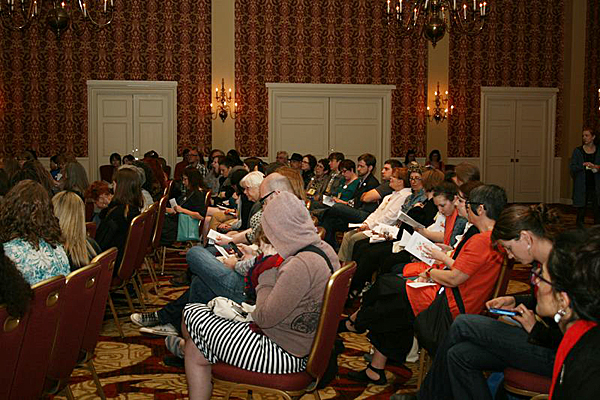
A similar dynamic was present in Peter DiCristofaro’s talk “Make Like the Masters.” He is the director of the Providence Jewelry Museum, which showcases the history of the Rhode Island jewelry industry through its extensive collection of objects, archives, and technologies of jewelry companies that now have mostly gone out of business. Providence was a city of blacksmiths and other skilled craftspeople that provided an infrastructure for the jewelry industry to thrive in the nineteenth and twentieth centuries, and DiCristofaro, like Ogden, did a great job of steering a path between technical geekery and historical narrative. In the United States, commercial jewelry and studio jewelry are driven by very different issues, partly because commercial production has a much longer history as well as other factors, such as the use of technology, the value given to artistic expression, and the ways in which the wearer/owner is defined by each field. As a result, a history of nineteenth- and twentieth-century jewelry production in Rhode Island doesn’t look the same as a history of studio craft. This presentation connected the audience to a history of jewelry production that raises various issues. It makes us think differently about the kind of histories that jewelers can and should engage with. DiCristofaro spoke a lot about technique and materials but in a way that was totally different to the studio craft discussion. It wasn’t about authenticity or artistic expression, but instead the orientation was toward economics, quick responses to customer demand, cheap variations, and multiples. From the past, we encountered a parallel to the ways in which studio craft is being challenged in the present by design.
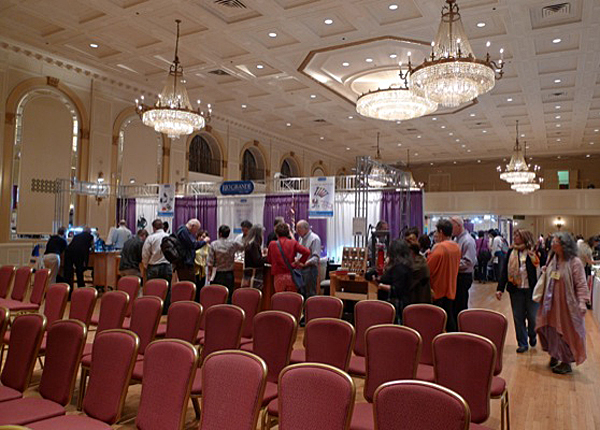
Because the other presentations were talks, a change of pace was provided by the conversation between Charles Lewton-Brain, who described himself as a “fine craft artist,” with “one foot in art land, one foot in industry land,” and Alan C. Elder, a curator of Canadian craft and design at the Canadian Museum of Civilization in Ottawa, Ontario. This was really nice because the conversation roamed across diverse aspects of Lewton-Brain’s career, providing an opportunity to experience the way a particular individual in the field has put together a practice, and how that practice is affected by wider factors, such as audiences, other generations of makers, institutions, other related fields, and various conversations unfolding in different ways at different periods in the past three decades. Lewton-Brain established the website Ganoksin in order to dissolve the bounds of secrecy in the field of metalsmithing and to present knowledge against the tendency to hide and protect what you know from others. He made a very interesting point about how things have changed, suggesting it has been 20 years since the international design world has accepted craft objects and about 15 years since the need for multiples has disappeared in design. As a result, craft can be engaged through a design framework—a theme that, in different ways, appeared and reappeared throughout the conference. As Lewton-Brain concluded, technological possibilities are blurring how things are done, and craft needs to engage with these trends. As digital technologies allow for “mashing”—the remixing of objects—how will the field respond to this challenge concerning originality, ownership, innovation, and the other core values of the discussion around studio craft?
SNAG conferences are an unwieldy beast, suturing together parts of the jewelry and craft fields that probably don’t make easy bedmates. It is what makes them very strange and quite interesting. I’ve attended two conferences now, and I still can’t easily understand precisely whom they are for and how the diverse expectations of the audience can be met. This aspect of SNAG played perfectly into the 2013 conference in Toronto because the stated theme was to explore exactly what happens when this kind of diversity is not disavowed but celebrated. If there was a missed opportunity here, I’d say it was around the unwillingness of the organizers to be more explicit about the tensions and differences, to articulate how we are not the same so that we could process it and be challenged through the need to confront difference. It seems to me that the alert attendee at “Meta-Mosaic” had a good opportunity to experience difference. But without the flashes of tension and struggle that are as much part of Toronto as the unity in diversity, the conference audience was also somewhat let off the hook, and maybe not challenged to really consider what it means to be part of a field in which we all serve very different masters.
